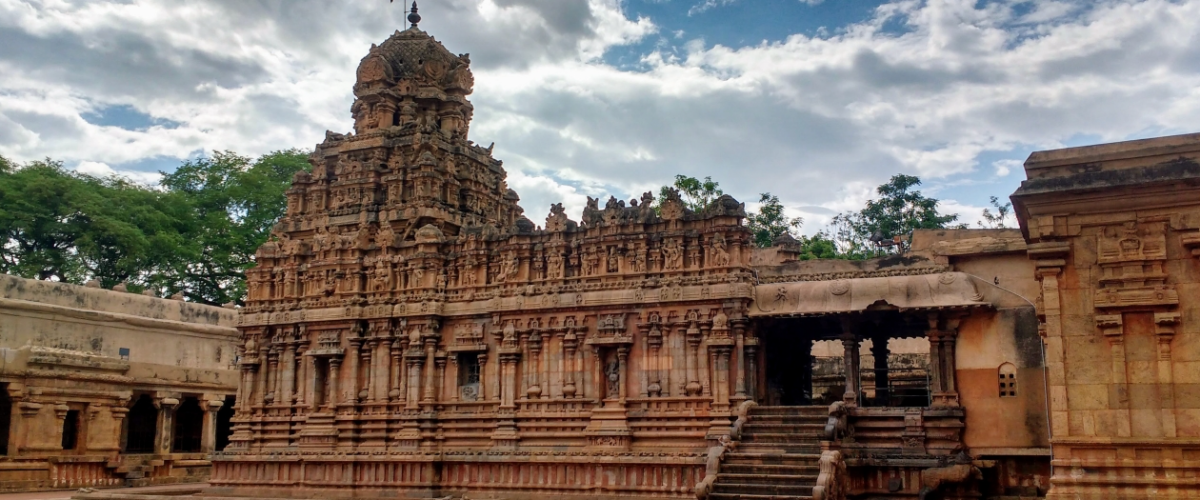

Three 18th century composers – Shyama Shastri, Tyagaraja and Muthuswami Dikshitar – form what is known as Carnatic music's Trimurti, meaning ‘The Trinity’. Their work that forms the bulk of today’s South Indian classical vocal repertoire. It was The Trinity – and particularly Tyagaraja, the most revered of the trio – who refined the composition and performance of kritis (three-line songs) into such a refined and detailed art.
All three composers lived at a time when South Indian classical music, flourished under royal patronage in the Thanjavur (Tanjore) principality of Tamil Nadu (see the Thanjavur Temple pictured above), which had emerged as something of a religious and cultural haven. Composers were usually scholars who were proficient in more than one Indian language and their song themes were nearly always inspired by religious devotion.
Tyagaraja (1767-1847), real name Kakarla Tyagabrahmam, was a devotee of the Hindu god Rama. Tyagaraja viewed the study of music as a devotional practice, considering it to be a vital element in raising spiritual awareness. His contribution to the Carnatic repertoire is tremendous, having composed thousands of kritis (mostly in praise of Rama) and introducing the innovative concept of sangathi (complex raag-based melodic variation).
It is said that out of the 25,000 or so kritis that he composed, some 700 have survived and are sung to this day, the most important being the five-song set called pancharatna (‘five gems'). He also wrote two musical plays in Telugu, Prahalada Bhakti Vijayam and Nauka Charitam each featuring dozens of kritis in numerous raags, but his great reputation as a saint-mystic-musician has somewhat eclipsed his achievements in secular music.
The oldest of The Trinity, Shyama Shastri (1762-1827), the first musician in his family, was the son of a Brahmin priest. His output was not as prolific as the other two members of The Trinity, only composing 300 kritis, but nevertheless, his work is among the best-known and most widely sung in the Carnatic repertoire. He is also thought to have originated the new genre of svarajati (previously only known in classical dance) and his compositional trio in this genre, known as ratna traya (‘three jewels'), specifically designed for vocal concerts as opposed to purely dance accompaniment.
Apart from being a composer who specialised in rare raags and the most complex of taal (rhythmic cycles) he was also noted as a singer of exceptional ability. Like Tyagaraja, Shyama Shastri composed exclusively in Telugu, the language of the Deccan plateau in central-South India.
The youngest member of the Trinity, Muthuswami Dikhshitar (1776-1835), also known by his pen-name Gurguha, is famous for many innovative techniques, including the introduction of certain aspects of North Indian vocal styles into Carnatic music. He is also the only one of The Trinity to have composed kritis in Sanskrit and is also credited with inventing a brand new genre – some 40 compositions called Nottuswara Sahitiya which were essentially kritis based on Western tunes – indicative of the cultural interaction that was already taking place between East and West in the India of the 1800s.
Listen to the music | Aruna Sairam leads a modern Carnatic ensemble group through the ominous Raga Shanmukhapriya, a framework used by Tyagaraja and Muthuswami Dikhshitar, often associated with warlike deities such as Murugan and Shiva. Live from Darbar 2009.
Jameela Siddiqi is an author, linguist, and BBC cultural commentator, specialising in postcolonial fiction and the devotional music of South Asia.
Darbar believes in the power of Indian classical music to stir, thrill, and inspire. Explore our YouTube channel, or subscribe to the Darbar Concert Hall to watch extended festival performances, talk and documentaries in pristine HD and UHD quality.
Darbar's resident yoga teacher Kanwal Ahluwalia has transformed her life through yoga; here's how she did it and you...
Read More 
Maharashtra is a Midwestern state in India, perhaps best known for being the home of Bollywood - the all-singing,...
Read More 
The beginner's guide to Indian classical music. Whether you’re completely new to raga music or just need a refresher, we’ve put together this brief overview of all things raga music to help you feel at ease when visiting one of our concerts or watch our videos on our YouTube or our Darbar Concert Hall.
Keep up to date with the latest news, events, music and musings across our social channels
For hundreds more clips and shorts, vist our YT page here 